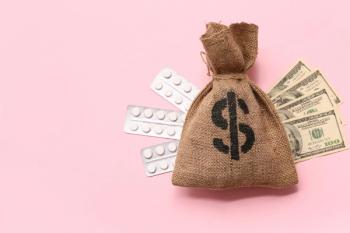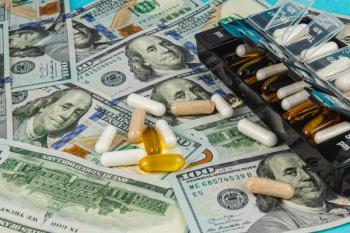
NACDS Presenters Discuss Top of Mind Pharmacy Trends, Forecasts
IQVIA experts discussed the key takeaways from their NACDS Total Store Expo presentation.
Drug Topics®: Hi, I'm Gabrielle Ientile for Drug Topics®. Today I'm speaking with Doug Long, vice president of industry relations at IQVIA, and Scott Biggs, director of supplier services at IQVIA. Doug and Scott presented the latest pharmaceutical trends, issues, and forecasts for the pharmacy industry during the 2021 NACDS Total Store Expo. Today, they'll be highlighting some of those key trends and forecasts pharmacies should be aware of.
Related:
In 2020 we were hearing a whole lot about telemedicine, how we're in the golden age of telemedicine now, but the data you shared was showing something a little different. Can you discuss those trends in telemedicine that you've been following through 2020 and what we might expect going forward?
Long: If you think about this is that telemedicine didn't really exist too much in January in February, pre COVID. It really came on the map in March of 2020. And it peaked one week in April, when about 20% of all the health care visits were telemedicine.
Now, it was peaking at the time that offices were shut down, institutions were shut down, so it really came to the forefront. It was the only option for people in some cases. It continued through the year and now we're starting to see - we're comparing it to last year, and it's down about 2 or 3% versus the comparable period last year.
I think telemedicine is finding what its appropriate level of will be. It's definitely not going to go away. It will be a big part of health care going forward. The disadvantage of telehealth is they don't have the vitals and the labs and diagnostics that would make physicians comfortable to prescribe new therapy. And so, that's why you see in telemedicine, this telemedicine visit does not generate as many new prescriptions as would a visit to an office or an institution.
Drug Topics®: Influenza (flu) season is coming. In your session, you shared some really interesting forecasts based on the Australian flu season. Can you discuss those?
Biggs: The Australian flu season has been an indicator for what the United States flu season will look like. The last flu season was a very weak season. So far this year, it's kind of started out weak also. We had a very weak season last year, so we're going to continue to watch it, see how it goes.
Long: And so was a week flu season. One of the things Scott and I have been looking at is what the vaccination rate has been in Australia, because we're coming into the flu vaccination period in the US, and their vaccination rates for flu are exactly the same as they were last year, which means probably we're going to see a big flu vaccination period this year. Of course, some of that's going to intersect with COVID-19 booster shots.
Biggs: September and October will be the peak of flu vaccinations. Now that we’re talking about a September release for a COVID booster, we expect to see that intersection rates at the same time.
Drug Topics®: So, how do you expect pharmacies to kind of deal with this dual rollout of these 2 vaccines?
Long: They've proven that they are up to the occasion. Just think about it - they went from zero miles an hour to 90 miles an hour on testing. And they went from zero miles an hour to 90 miles an hour on COVID-19 vaccinations. And I'm sure that they will step up and be able to do both It will be difficult, but they’ve proven their worth and I think they can do it again.
Biggs: COVID-19 vaccinations last year were a historic first for retail. Obviously, in the past year, we saw about 51 million flu vaccinations given in the retail setting: a 37% increase over the prior year. And one of the hypotheses out there was that last season, there was so much lockdown, so many offices closed, many office’s employers had offered in the past flu vaccination clinics. So, retail rose to that challenge, really served the communities, because they are in sync with the COVID-19 vaccine. I don't see any reason why they would not continue to rise to the challenge.
Drug Topics®: So, of course, let's talk about COVID-19 vaccination in itself. On the topic of COVID 19 vaccination rates and the populations that also haven't yet been vaccinated for COVID, due to hesitancy or otherwise, can you delve a bit into what you've been seeing on the COVID-19 vaccination front? And you mentioned some updated numbers as well.
Long: Well, we've seen a resurgence of COVID-19 vaccinations. Over the last few weeks, it's really accelerating right now, right at the time that the Delta variant started to spread through the unvaccinated population.
Our thought process is, it's probably the unvaccinated finally decided to get vaccinated. Because when we got to July, basically anybody that wanted to be vaccinated, was vaccinated, and anybody that didn't want to be vaccinated, wasn't vaccinated. And so, some people are starting to second guess their decision not to be vaccinated and got the COVID shot. We've seen an acceleration of that, not to the levels that we saw in April, but it's trending in a positive path.
In terms of the dynamics, the Asian population is the most vaccinated, followed by the white population, followed by the Hispanic population, followed by the Black population. And all those numbers are accelerating. For the people that haven't been vaccinated, some have a lot of social determinants of health (SDOH): low income, low education, dense housing situations and things of that sort. But we're seeing an increase in vaccinations. Scott tracks every week – why don’t you talk about the cases and deaths, Scott?
Biggs: We've started to see an increase in the number of cases and the number of deaths, but nowhere near where we were last summer. But we are seeing an increase in both in cases and in deaths.
Long: But looking at the numbers that I looked at today, it looks as though the 7-day moving has peaked and is now flattening out, which may mean it is not going to get any worse, that we may we may have reached the top.
Drug Topics®: We talked about flu, COVID-19 and telemedicine. But your presentation was really comprehensive and impressive that you shared at NACDS Total Store Expo. What was one other trend or forecast that you really want the attendees and our audience to take from your session?
Long: I think at the end of the presentation, when you see that the pharmacies see patients 10 times more frequently than other health care providers. And the JD Power study came out, it says that patients are getting very engaged with their pharmacies and when they're engaging in pharmacies, they spend more money in the rest of the store. I'd say that pharmacies really stepped up and continue to step up and they've picked up a lot of new things they can do. And I don't see the genie going back in the bottle on that.
Drug Topics®: Awesome. Well, Scott and Doug, those are all the questions I have for you. Thank you so much for taking the time to do this today. It was really great to speak with you on these topics.
Newsletter
Pharmacy practice is always changing. Stay ahead of the curve with the Drug Topics newsletter and get the latest drug information, industry trends, and patient care tips.

























































































































































